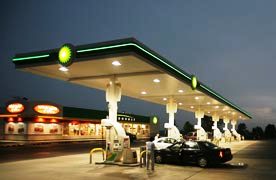Gasoline prices basically held steady during the past week but the Organization of Petroleum Exporting Countries said the week its basic strategy that could lead to higher prices next year is beginning to work.
After 13 consecutive days of holding steady at $2.29 per gallon, the national average price for regular unleaded gasoline began ticking higher last week, reaching $2.31 per gallon.
The average represents an increase of two cents per gallon compared to one week ago; however, prices have fallen for 46 of the past 56 days for a total of 36 cents per gallon.
On the whole, pump prices remain discounted across the country, and drivers are saving an average of four cents per gallon month-over-month, and 89 cents per gallon year-over-year.
(BMW adds new pocket rocket with new 2016 M2. For more, Click Here.)
For the second week in a row, retail averages are below $3 per gallon in every state. California ($2.91) remains the nation’s most expensive market for retail gasoline and is less than $2 per gallon in two states, including New Jersey in the heart of the northeastern U.S.
The refinery maintenance season is reportedly nearing its peak, and the national average has been relatively stable since Sept. 15. According to the U.S. Energy Information Administration, the Midwest refinery utilization rate fell below 80% for the first time since 2013, which means production was running well below capacity.
Ample domestic supplies are expected to temper any regional price spikes, preventing the national average from moving dramatically higher. Before the end of the year, drivers could still see the national average fall below $2 per gallon for the first time since 2009, assuming crude oil prices do not increase and there are not unexpected disruptions to supply.
(Click Here for details about the 2016 Nissan Titan XD taking “Truck of Texas” title.)
But OPEC expects the price of crude oil to increase next year. The cartel predicts global demand for the oil produced by its 12 members will be stronger in 2016 given that crude production by competitors, such as the U.S., is beginning to shrink in response to the cartel’s ongoing strategy of letting the price of crude sink during the past 18 months.
OPEC expects the market will need 30.82 million barrels per day in 2016 from its member countries, exceeding its previous forecast by more than 510,000 barrels per day. Meanwhile, it said, non-OPEC producers such as, Europe, the Americas and Russia will see a decline in their oil production by 130,000 barrels per day.
“This should reduce the excess supply in the market and lead to higher demand for OPEC crude,” the report said, “… resulting in more balanced oil market fundamentals.”
In addition, OPEC expects the overall growth in global demand for oil to decline, in large part because of slower economic growth in China. But if non-OPEC nations, which generally face higher production costs, cannot extracts as much crude as in the past. Instead markets will tighten to the benefit of the cartel.
(To see more about Ford expanding aluminum use into 2017 Super Duty, Click Here.)
“In terms of non-OPEC supply,” the report said, “the impact of lower oil prices on production has resulted in the supply growth forecast being downwardly less than the initial forecast and well below the previous year.”

